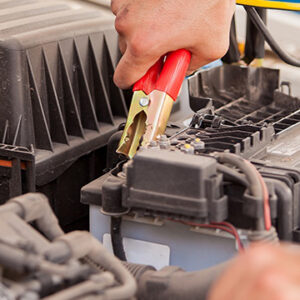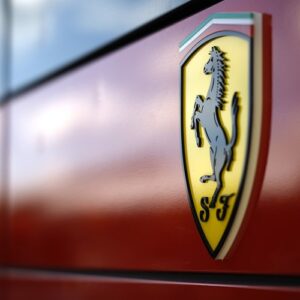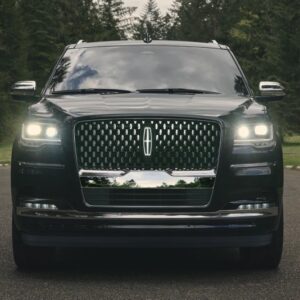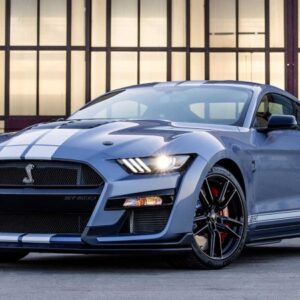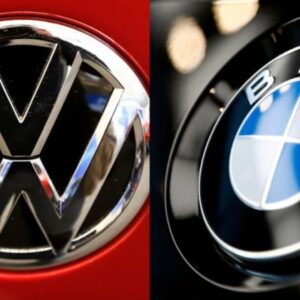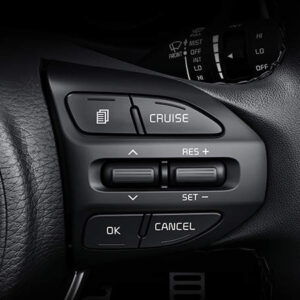What does DRL mean on a car? Modern vehicles have so many sophisticated features that the average driver doesn’t even know half of them and how they function. Throw in several acronyms, and it quickly becomes more confusing. With that said, many of our readers are asking, “what is DRL on a car?”
If you’re looking for a quick answer, DRL means Daytime Running Lights (also called Daytime Running Lamps). These are lighting devices that come with modern vehicles, and they help improve your car’s visibility. So for today, we’ll talk about daytime running lights or DRLs, their primary functions, benefits, and some frequently asked questions.
What Does DRL Mean On A Car?
DRL stands for ‘daytime running lights.’ It is a safety measure that makes your car more visible in traffic. They are particularly important in low-light settings, such as driving through a tunnel, beneath bridges, or at dark places.

Avoiding collisions is the primary purpose of your daytime running lights. You don’t need to use the DRLs in order to see where you’re going. They’re there just to make you more visible to other drivers.
If they’re working properly, they’ll light on when you turn the key in your ignition. When you turn on your headlights, you’ll notice that the light coming from your daytime running lights dims. When your headlights are turned off, they shine brighter.
What Is The Purpose Of Daytime Running Lights?
Daytime Running Lights allow other drivers to see you on the road, which decreases the chances of collisions. The lights stay on even when the parking brake is activated. Once you turn your vehicle off, the daytime running lights will turn off as well. The daytime running lights can also turn off once the headlight switch turns on, or when the headlight switch is set to auto mode.
Formerly exclusive to luxury and high-end vehicles, DRLs are designed to make your car more visible to pedestrians, cyclists, and other vehicles on the road during the daytime. DRLs were initially popular in some parts of the world where short and often dim daytimes are common, including Iceland, Sweden, Norway, Denmark, and Canada.
Simply put, daytime running lights are basically low-beam headlights that work during the daytime. While it may seem counterproductive to use headlights during the day, DRLs are actually for the benefit of other drivers.
As mentioned, daytime running lights improve your vehicle’s visibility for other motorists and pedestrians – one of the many ways to help your vehicle stand out. Unlike standard headlights, DRLs are not for illuminating the road ahead and are not installed on the car’s rear.
Since DRLs are more subdued than standard headlights, they don’t interfere too much with the other drivers on the road. These lights usually consist of low-powered LED lights and are either set as LED lights or as an array of lights.
DRLs may also come in LED fog lamps or special external lighting. While they’re not mandated here in the U.S., daytime running lights are now considered mainstream in modern vehicles.
How Do DRL Work?
The system is automatic when you have a vehicle equipped with daytime running lights. Therefore, your DRLs will illuminate without your input, and you’ll likely forget about having them in the first place. However, how these lights work may vary by manufacturer or model.
With the original application, the DRLs are simply a lower-powered setting of an already existing light. Over time, daytime running lights became a premium feature, somewhat of a brand identifier.
Many automatic DRLs will usually come on as soon as you turn on the ignition. However, car manufacturers enable these lights once the driver shifts out of the “Park” gear. Once the headlights are manually or automatically enabled, the DRLs may stay on or be disabled.
How Do You Use DRL?
There’s not much of a learning curve needed here. DRLs operate all on their own. They illuminate when you engage the ignition and extinguish when the headlights activate. The driver has no real control over operating DRLs because there is no DRL on-off switch.

Under limited conditions, like when parked with the engine running, your vehicle may provide a method for extinguishing the DRLs. However, the procedures vary from model to model.
DRL Indicator
You should study your owner’s handbook, just as you would for any other feature on your vehicle, to ensure you fully understand the functions of numerous warning and indication lighting. In most cases, the DRL indicator light tells you if your car’s daytime running lights are on and performing within their normal specifications.
When you start your engine, it will usually come on and then switch off after a few seconds or when you remove your foot off the brake. There may be a problem with your running lights if your DRL indicator stays on for a prolonged amount of time.
If the DRL warning light comes on while you’re driving, it’s likely that the computer has recognized a problem. A faulty bulb or a problem with the DRL circuit fuses or relays might be the cause of this.
It is important to remember that on some vehicles, the DRL light will remain on when the running lights are on. Again, consult your vehicle’s owner’s handbook for further information.
Are There Safety Concerns and Disadvantages?
Daytime running lights were introduced mainly for safety reasons. While we’re advocates of having more visibility during the day, it’s surprising to read this 110-page NHTSA report and find out that DRLs only had minimal accident reductions. With that said, not all drivers are big fans of daytime running lights.
One of the biggest concerns about DRLs is that they cause visual glare and momentarily blind other drivers, which may lead to an accident. In some cases, some people claim that daytime running lights have obscured the visibility of directional signal lights. To address this drawback, some countries have strict brightness regulations that drivers must follow.
Another common complaint surrounding DRLs is that they are unnecessary in the U.S., where daylights are brighter and longer – unlike in many Scandinavian countries where they are mandated. With the aforementioned NHTSA report, maybe they’re onto something.
Another pain point regarding DRLs is that they quickly burn out due to their always-on operation. This means drivers may have to change their running lights frequently.
Do You Need Daytime Running Lights?
If you’re in the U.S., you’re not legally required to have daytime running lights. Having said that, newer vehicles (2011 models or more recent) will likely have DLRs outfitted in them. So even if you don’t want it, some cars have them installed by default. Some vehicles with DRLs have systems that allow you to disable these lights.
But should you disable your daytime running lights?

Despite DRLs not offering significant reductions in daytime accidents, it’s still better to have daytime running lights than not. Having extra light and visibility is always helpful to keep you and your occupants safe. For instance, when the night is approaching and there’s an overcast, having standard headlights might be too much.
Thus, the DRLs’ low-powered illumination is excellent for illuminating incoming traffic. Furthermore, some insurance providers offer discounts for vehicles with DRLs because they are safer.
What Causes the DRL Warning Light to Illuminate?
The DRL warning light will usually illuminate when there is a problem with the car’s daytime running lamps or other important components of the vehicle’s safety system.
Some common causes for a DRL warning light to illuminate include a short circuit in the wiring for the daytime running lamps, a blown fuse, or a defective DRL relay. It is important to diagnose and repair the issue as soon as possible to avoid any further damage to the car.
In some cases, the DRL warning light may also be triggered by a malfunctioning headlight switch or a faulty headlight bulb. If the warning light is illuminated, it is important to check the headlight switch and bulbs to ensure that they are functioning properly. If the issue is not resolved, it is best to take the car to a qualified mechanic for further diagnosis and repair.
How to Diagnose and Repair a DRL Warning Light
In order to properly diagnose and repair a DRL warning light, you should first check for any short circuits in the wiring for the daytime running lamps. If there is a short circuit, you should trace the wiring and repair it as necessary.
If there is no short circuit, you should check the fuse for the daytime running lamps to see if it has blown. If it has, you can replace it with a new one. If neither of these solutions correct the problem, you should then check the DRL relay and replace it if necessary.
If the DRL relay is functioning properly, you should then check the headlight switch and the dimmer switch. If either of these switches are faulty, they should be replaced. Additionally, you should check the wiring harness for any loose connections or corrosion. If any of these issues are present, they should be repaired or replaced as necessary.
What are the Safety Implications of a Malfunctioning DRL Light?
It is important to diagnose and repair a malfunctioning DRL light as soon as possible because it could lead to safety issues. If a DRL light is not functioning properly, it could cause other components of the car’s safety system to malfunction.
This could lead to poor visibility during the day, which could be a major hazard for both drivers and pedestrians. It is important to properly diagnose and repair any issues with a DRL light in order to ensure the safety of yourself and other drivers.
In addition, a malfunctioning DRL light can also lead to decreased fuel efficiency. When the DRL light is not functioning properly, it can cause the car to use more fuel than necessary. This can lead to higher fuel costs and increased emissions, which can be damaging to the environment.
It is important to diagnose and repair any issues with a DRL light in order to ensure the safety of yourself and other drivers, as well as the environment.
Common Issues with DRL Warning Lights
The most common issue with DRL warning lights is a short circuit in the wiring for the daytime running lamps. This is usually caused by a cracked, worn, or damaged wire in the wiring harness.
Another common issue is a blown fuse for the daytime running lamps, which can be easily replaced with a new one. Finally, a defective DRL relay can also cause issues with the DRL warning light and should be replaced if necessary.
In some cases, the DRL warning light may be triggered by a faulty headlight switch. This can be tested by disconnecting the headlight switch and checking for continuity. If the switch is faulty, it should be replaced. Additionally, a faulty headlight bulb can also cause the DRL warning light to come on, so it is important to check the bulbs and replace them if necessary.
How to Prevent Future Issues with DRL Warning Lights
In order to prevent future issues with DRL warning lights, it is important to regularly inspect and maintain all components of your car’s safety system. This includes regularly checking the wiring for any signs of wear or damage and replacing any worn or damaged wiring as soon as possible.

Additionally, it is important to inspect and replace any fuses that have blown before they can cause any further damage. Finally, it is important to inspect and replace any defective DRL relays in order to ensure that your car’s DRL system is working properly.
It is also important to regularly check the DRL warning light itself for any signs of wear or damage. If the light is not functioning properly, it is important to replace it as soon as possible. Additionally, it is important to check the DRL system for any loose connections or faulty wiring.
If any of these issues are present, it is important to have them repaired or replaced as soon as possible in order to ensure that your car’s DRL system is functioning properly.
Tips for Troubleshooting a Malfunctioning DRL Light
When troubleshooting a malfunctioning DRL light, there are several steps that you can take in order to quickly diagnose and repair the issue. First, you should check for any short circuits in the wiring by tracing it and inspecting it for any worn or damaged areas.
If there are no short circuits present, you should then check the fuse for the daytime running lamps and replace it if necessary. Finally, if neither of these solutions corrects the issue, you should then inspect and replace any defective DRL relays.
If the issue still persists, you may need to check the DRL control module for any loose connections or faulty wiring. Additionally, you should also check the DRL bulbs to ensure that they are functioning properly.
If the bulbs are not working, you should replace them with new ones. Finally, if all of these steps have been taken and the issue still persists, you may need to take your vehicle to a professional mechanic for further diagnosis and repair.
FAQs
Why did my DRL light on the dash come on?
Every automaker does things differently with their dashboard warning lights. In some systems, an illuminated DRL means that the lights are engaged. In this case, an illuminating DRL light on your dash means there’s an issue with your daytime running lights. The most common reason for this warning light is that your DRLs might have a faulty bulb or some wiring issues.
Is it safe to drive with daytime running lights?
Absolutely! DRLs are low-powered and more subdued compared to traditional headlights, so they’re less likely to interfere with other drivers’ vision. Unless you’re in a country where DRLs are mandated, in that case, you should always drive with these lights activated.
Are DRLs draining my car battery?
Daytime running lights are only illuminated whenever the engine is running. Since they’re turned on and off automatically, there’s no risk of forgetting to turn them off and drain the battery. DRLs also require very low power, so they’ll have little to no impact on your car’s battery life. Plus, many DRLs are also LEDs, which means they consume very little power.
Are Daytime Running Lights the same as headlights?
No, DRLs are not the same as headlights. DRLs are designed to make your vehicle more visible to other drivers during the day, while headlights are designed to illuminate the road ahead of you when it’s dark.
Can DRLs be used as fog lights?
No, DRLs are not designed to be used as fog lights. While they increase the visibility of your vehicle to others, they do not have the beam pattern or intensity to effectively illuminate the road in foggy conditions.
Do Daytime Running Lights improve safety?
Yes, numerous studies have shown that DRLs can improve road safety by increasing the visibility of vehicles during the day. This can help to reduce the risk of collisions.
Can I turn off my Daytime Running Lights?
In most vehicles, you cannot manually turn off the DRLs as they are designed to come on automatically when the vehicle is started. However, some vehicles may have a setting that allows you to disable the DRLs.
Above is information about What does DRL mean on a car? that we have compiled. Hopefully, through the above content, you have a more detailed understanding of How do DRL work? Thank you for reading our post.
